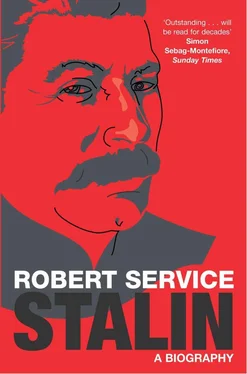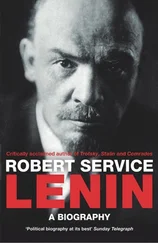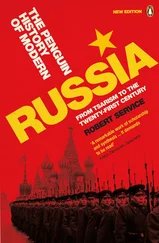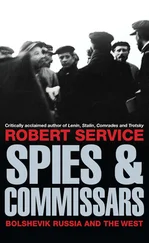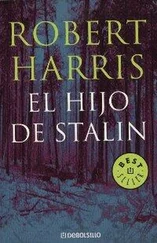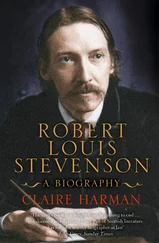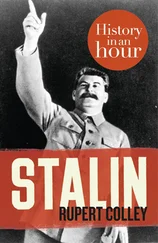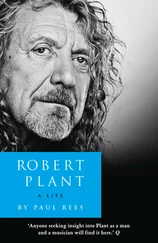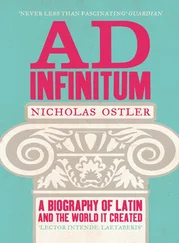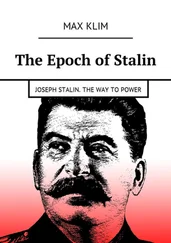Robert Service
STALIN
A Biography
Francesco Benvenuti, Adele Biagi, Geoffrey Hosking and Arfon Rees read the draft and, as so many times in the past, offered invaluable suggestions. Katya Andreyev (on the Second World War), Jörg Baberowski (on the ‘national question’), Yoram Gorlizki (on the years after 1945), Mark Harrison (on Soviet economics), George Hewitt (on Georgian language and culture), Stephen Jones (on Georgian Marxism and culture), John Klier (on Jews) and David Priestland (on the 1930s) read several chapters. I also appreciate advice on particular matters from Bob Allen, Rosamund Bartlett, Vladimir Buldakov, Bob Davies, Norman Davies, Simon Dixon, Richard Evans, Israel Getzler, Ali Granmayeh, Riitta Heino, Ronald Hingley, Vladimir Kakalia, Oleg Khlevnyuk, Vladimir Kozlov, Slava Lakoba, Melvyn Leffler, Hugh Lunghi, Rosalind Marsh, Claire Mouradiane, Zakro Megreshvili, Simon Sebag Montefiore, Silvio Pons, Al Rieber, David Saunders, Harry Shukman, Peter Stickland, Martin Stugart, Ron Suny, Steve Wheatcroft, Jerry White, Faith Wigzell and Jackie Willcox. I am grateful to Matthew Hingley for creating a CD of my 78 rpm discs of Stalin’s speeches and to Vladimir Kakalia for making a present of some of these discs. Georgina Morley, Kate Harvey and Peter James, on the editorial side, have been invariably helpful with their suggestions for improvements. I am grateful to Hugh Freeman, George Hewitt, Ron Hill and Brian Pearce for drawing my attention to errors which have been corrected for this paperback edition.
The book benefited from discussions in the Institute of Russian History in the Academy of Sciences, the Institute of World History and the Russian State Archive for Socio-Political History, and more recently it was helpful to discuss the Stalin question at the International Summer University near Gagra in Abkhazia and at the National Library in Tbilisi. (Stalin as a student at the nearby Spiritual Seminary in the late 1890s was banned from using that library.)
St Antony’s College’s Russian and Eurasian Studies Centre has been an incomparable environment for the research. My colleagues Archie Brown, Alex Pravda and Jackie Willcox have supplied constant counsel and encouragement. I have also benefited from the Monday seminars run by our Centre, where several of my papers touching the Stalin question have been discussed. Oxford librarians Jackie Willcox and Angelina Gibson have looked out for material being published in Russia. Simon Sebag Montefiore generously shared with me his notes on the unpublished memoirs of Kandide Charkviani. Heinz-Dietrich Löwe and Shaun Morcom obtained other material for me. Liana Khvarchelia and Manana Gurgulia, organisers of the Abkhazian Summer University with Rachel Clogg and Jonathan Cohen of Conciliation Resources, secured access for me to Stalin’s dacha at Kholodnaya Rechka, Rachel Polonsky to Molotov’s apartment in central Moscow: my thanks to all of them them. Zakro Megreshvili assisted me in obtaining and translating Georgian political memoirs; Elin Hellum rendered a Swedish newspaper article into English.
The line of influential interpretations of Stalin and his career has remarkable homogeneity in several basic features overdue for challenge. This book is aimed at showing that Stalin was a more dynamic and diverse figure than has conventionally been supposed. Stalin was a bureaucrat and a killer; he was also a leader, a writer and editor, a theorist (of sorts), a bit of a poet (when young), a follower of the arts, a family man and even a charmer. The other pressing reason for writing this biography is that the doors of Russian archives have been prised ajar since the late 1980s. Difficulties of access remain, but many dusty corners of Stalin’s life and career can now be examined. Documentary collections have also appeared which have not yet entered a comprehensive biography. Historians and archivists of the Russian Federation in particular have been doing significant work which has yet to be widely discussed.
Stalin’s life calls up questions of historical approach. Most accounts have fallen into one of two categories. Some have been focused on his personality and motives and the effect of these on politics and society; others illuminate the general history of the USSR and elsewhere and take for granted that we already know most of what we need about him as an individual. Neither category is adequate by itself and I offer a synthesis in the following chapters. Thus while it is vital to examine Stalin’s peculiar personality, it is equally necessary to analyse the environment in which he grew up and the political and other pressures under which he operated. Accounts are also divided between those which highlight the specificity of a given period and those which pick out the more durable factors in his career and his party’s history. This book is intended to bridge that artificial dichotomy. Thus, while detailed investigations of the Great Terror are essential, so too is a consideration of the whole set of circumstances produced by the October Revolution (and indeed by earlier situations). The aim is to bring together what are usually called intentionalism and structuralism as well as to combine what may be termed synchronic and diachronic approaches.
Several sections of the book have involved examination of records from archival files and recent documentary collections: on Stalin’s childhood in Gori; on his education; on his 1904 ‘Credo’; on his armed robbery campaign; on his time in Siberia; on his activity in 1917, in the Civil War and in the Soviet–Polish War; on the politics of 1922–3; on his marriages; on his motives in the Great Terror; on his leadership in the Second World War; and on his speeches and manoeuvres in 1952–3. Significant factual data have been unearthed in this process. The chapters also reinterpret certain important aspects of his life: the Georgian national background; his cultural development; the political authority of Stalin before, during and soon after the October Revolution; the rupture with Lenin in 1922–3; the origins and consequences of the Great Terror; the oddly impersonal ‘cult’; the style of rulership and the constraints on his despotic power; and the multidimensionality of his political career. A final point is that the book is intended as a general depiction and analysis. From his birth in 1878 to his death in 1953 Stalin was a human earthquake. Each episode in his lifetime of impact requires careful attention. But sense also has to be made of the interconnectedness of him and his times across a long — altogether too long — existence.
One personal experience in the course of the research stands out from the others. In December 1998 I interviewed Kira Allilueva, Stalin’s niece, in her flat in north Moscow for a radio programme I was making with Sheila Dillon of the BBC. Kira Allilueva’s refusal to be embittered by her uncle’s imprisonment of her — and her zest for life and fun — is a vivid memory. On that occasion she presented me with a copy of her uncle’s poetry. (The early chapters show why Stalin’s verses are important to an understanding of him.) It was the first time I had met someone who had known Stalin intimately. (An attempt in 1974 to interview Lazar Kaganovich, whom I spotted in Moscow’s Lenin Library, met with a curt refusal. Still, it was worth a try.) Kira Allilueva’s insistence that all the many sides of Stalin need to be understood before he can be comprehended is a principle that informs this book.
Oxford, June 2004
Stalin changed his name many times before the Great War and only started consistently calling himself Stalin in 1912. In the interests of clarity I have called him Dzhughashvili until 1912 and Stalin thereafter even though many acquaintances knew him by nicknames (Soso, Soselo and Koba) and by pseudonyms (including Ivanovich and several others) both before and after that year. And although he was christened Yoseb Dzhughashvili, I have mainly used the more familiar Joseph Dzhughashvili. The names of other Georgians are given by a conventional transliteration into English but without the diacritic signs. The territory to the south of the Caucasus mountain range presents a nomenclatural difficulty. In order to emphasise its intrinsic significance, especially in part one of the book, I refer to it as the south Caucasus rather than — as in Russian geographical and administrative parlance — the Transcaucasus; the exceptions to this are official Soviet designations such as the Transcaucasian Federation. As for transliteration from Russian, I have used a simplified version of the Library of Congress system with the qualification that endnotes are given in line with the full system. Dates are given according to the calendar in official use at the time in Russia. The authorities employed the Julian calendar until 1918, when they switched to the Gregorian one.
Читать дальше
